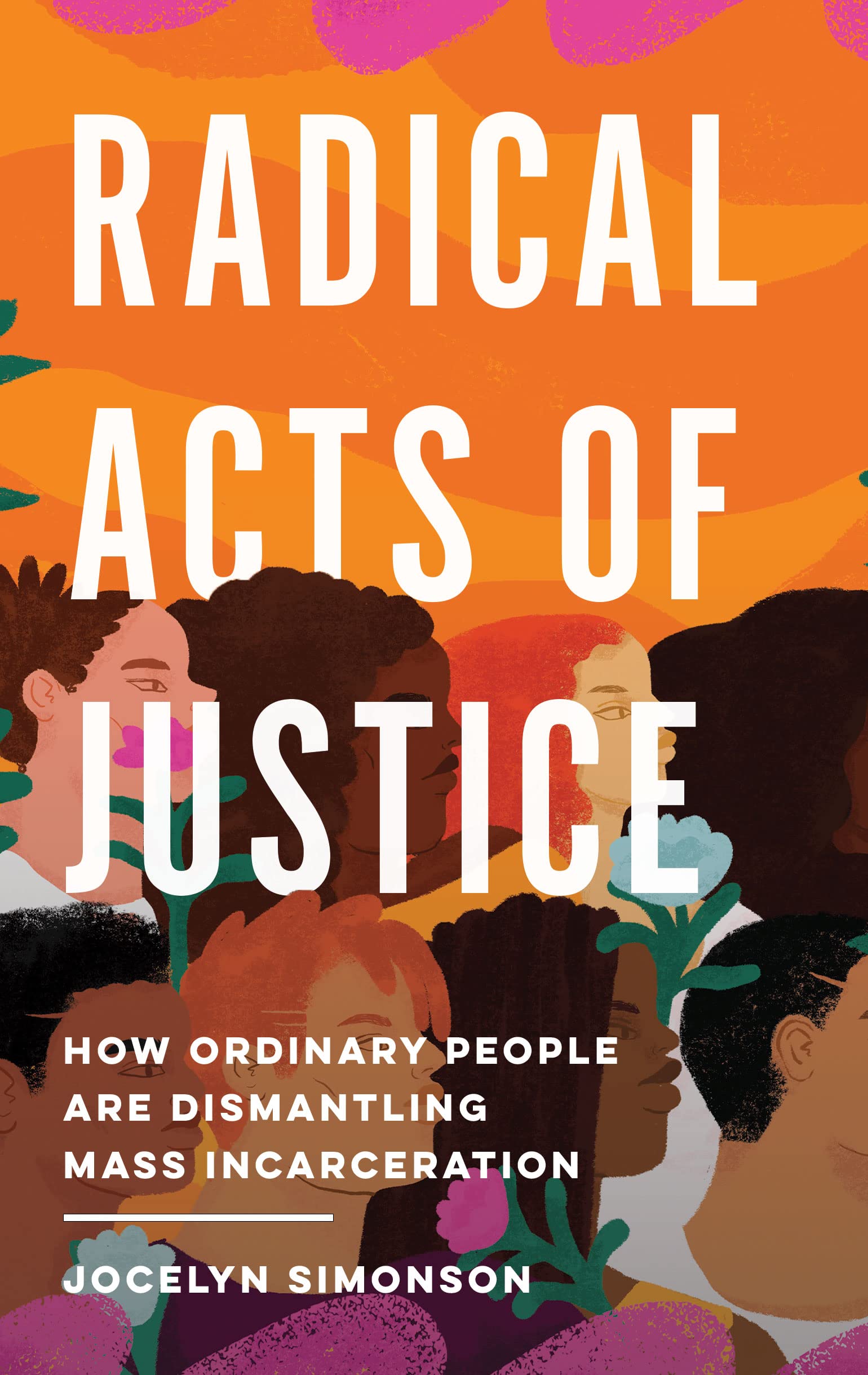Reading Jocelyn Simonson’s essay, I am most struck by the truth of how engaging with current state systems in good faith is often the radicalizing experience that convinces us of the necessity of revolutionary change. Over a decade ago, when I was first getting more involved with abolitionist campaigns in Chicago, I was struck by how many of the core organizers were people who had, time and again, sought help from the police, from criminal and civil courts, or from carceral nonprofits and government agencies. And, time and again, they had experienced dismissiveness, exclusionary policies, and even further violence. I quickly learned that, contrary to mainstream ideas of abolitionists as unconcerned with community safety, it was precisely their focus on ensuring safety for everyone that brought them to this work.
Many of these organizers were specifically current or former advocates against domestic and sexual violence. And, indeed, it was by working at domestic violence shelters and hotlines, accompanying queer and trans youth involved in the sex trade, running drop-in centers for homeless youth, and endless other efforts, that the false promises of state-offered safety had become clearer to them. It was their repeated efforts to access the resources that promised safety and failed to deliver that convinced these mostly Black women and other women of color that abolition was the only realistic pathway to safety for all survivors of harm, as Survived & Punished explains.
Roundtable

This article is part of a roundtable about Jocelyn Simonson’s new book, Radical Acts of Justice: How Ordinary People Are Dismantling Mass Incarceration.
It was in those same organizing communities that I first heard the now-familiar lesson that “engaging in reform is radicalizing.” For many of us, engagement with the prison–industrial complex has only deepened our commitment to building systems of care and accountability that lie entirely outside of its reach. While I was already committed to working toward an abolitionist future when a group of us launched Chicago Community Bond Fund in 2015, the work of operating a community bail fund increased the urgency of ending money bond and changing policies to increase pretrial freedom. As we fundraised first tens of thousands, then hundreds of thousands, and eventually millions of dollars to purchase the liberty of individuals in Cook County Jail and across Illinois, we freed at most 600 people in a year. Each year, however, jails in Illinois were admitting over a quarter of a million people awaiting trial—and, since 2020, a still astounding 170,000 people annually.
The work of bail funds and other mutual aid projects is essential. Each person the bond fund freed from jail was an incredible achievement, and it was life-changing—and sometimes life-saving—for that person and their loved ones. It did not, however, come anywhere near tackling the scale of the harm that the jail was causing to our communities. We mostly operated in a single county out of the 102 in Illinois. We could only ever pay bond to free a relatively small fraction of the people who contacted us. Often we were paying bonds months and even years after someone had been booked into jail: So much damage to their physical and emotional well-being, and their opportunities and support systems outside (jobs, relationships and more) had already been done by the time we paid their ransom to the courts.
So we increased our efforts toward advocating for systemic changes that would stop people from ever being booked into jail in the first place. Chicago Community Bond Fund became a founding member and driving force within the Coalition to End Money Bond in 2016 and, in 2019, the Illinois Network for Pretrial Justice. In 2021 these coalitions helped pass the Pretrial Fairness Act, which will abolish money bond and decrease pretrial jailing in Illinois when it goes into effect in September of this year.
The movement for pretrial freedom in Illinois benefitted from having observed and learned from the leadership of abolitionist organizers in other local and state-level campaigns. Because the criminal legal system advocacy space in Illinois was not dominated by the same well-funded reformist institutions largely anchored in New York, Washington, D.C., and California, Chicago’s grassroots abolitionist left had space to grow, develop, and even win. The behemoth organizations pushing reforms that Dylan Rodríguez has identified as counterinsurgency—and which Kay Whitlock and Nancy Heitzeg have dubbed “carceral cons”—were largely absent from Illinois. This opened a space for grassroots organizing campaigns to build power. We had brave organizers such as Mariame Kaba, Beth Richie, and others who talked openly about abolition many years before it became a mainstream idea. Kaba in particular co-created spaces where young people could come together to learn and practice changing the world through organizing, including Rogers Park Young Women’s Action Team, Chicago Freedom School, Project NIA, and We Charge Genocide.
More from our decarceral brainstorm
Every week, Inquest aims to bring you insights from people thinking through and working for a world without mass incarceration.
Sign up for our newsletter for the latest.
Newsletter
Their leadership grounded many Chicago organizers in abolitionist values and provided us with the key guidance from the long lineage of abolitionist campaigns, including the ideas of “non-reformist reforms” from Critical Resistance. That guidance ensures our demands focus on two key things: First, reducing the power, scope, and reach of the prison–industrial complex—both its logic and its harmful institutions (including criminal courts). And, second, increasing community capacity to prevent and respond to violence and other kinds of harm with repair. As Simonson’s essay explains, this analysis and understanding of the core function of criminal courts allows us to see why Boston’s jail court could never be an appropriate response to supporting people experiencing homelessness.
Of course, institutions that are subject to these critiques are trying to recuperate their legitimacy, particularly in light of the international Black Lives Matter uprisings of 2020, the overdose crisis, and growing movements to decriminalize drugs. In self-identified liberal bastions such as Boston and Chicago, that has looked like claims from police, jailers, and criminal courts that they are service providers. Long-time radical organizer James Kilgore has dubbed this “carceral humanism,” and it is most actively deployed in response to mental health and substance use treatment—two areas of immense need that governments dramatically under-provide in the community but are often open to funding in the context of criminalization. Right now, Illinois sheriffs and prosecutors raise their role as service providers as a primary reason why they oppose the Pretrial Fairness Act. One rural sheriff told researchers: “We don’t have a homeless shelter in this county. . . . The jail is a homeless shelter.” He continued: “We can’t find them a place to stay, we can’t give them money. . . . But what we can do is bring them in jail for about four days or five days. And they shower, they get some clean clothes, they go see a nurse, they eat.”
This exemplifies our society’s willingness to spend (more) money on incarcerating someone instead of spending less to meet their needs in community. A homeless shelter costs less to run than a jail and gets better outcomes. Underlying this decision is a hidden policy preference for control and patronization over care and support. One Illinois prosecutor told the same researchers they view incarceration as the only real pathway to substance use treatment: “If they stayed in jail for 10 days, unable to post bond, maybe we can get them into rehab, maybe we can get them help, maybe we can get them talking with someone.”
Attempts to frame jail as the only way to support people in need fall apart when confronted with the actual impact of jails. In reality, people who use opioids are forty times more likely to die of an overdose in the first two weeks after incarceration. People also experience a greater risk of death during incarceration: So far this year, at least eleven people have died in Cook County Jail, the majority from overdose or substance poisoning. The Illinois Network for Pretrial Justice has directly taken on the way pretrial jailing causes particular harms to people who use drugs, including by increasing the risk of overdose death. The network has created an entire fact sheet devoted solely to debunking these carceral humanist claims and joined with harm reduction and substance use treatment providers to support the Pretrial Fairness Act specifically because of how pretrial incarceration harms their members and clients.
Despite all the data and evidence proving that jail doesn’t support recovery, and in fact increases risk of overdose deaths, only organized communities will change policy. Being right doesn’t create power on its own, and there’s deep investment in the carceral status quo. Simonson’s examples and the campaign for pretrial freedom in Illinois are powerful models because they each demonstrate how organizing can win materials gains for people who are being targeted by the prison–industrial complex, and improve lives immediately—even as we work toward the long horizon of abolition.
As Simonson argues, it is necessary to engage with criminalizing institutions not only because there are people trapped inside them right now who should have the support and solidarity of outside allies, but also because it is through that engagement that we learn better how to defeat these systems. Joining together, we can work both to build strong community-based spaces for transforming harm and to dismantle the prison–industrial complex. As long-time organizer Rachel Herzing shared recently in a Critical Resistance webinar about organizing abolitionist campaigns, these cannot be separate projects. The prison–industrial complex will not magically wither away. It is only through building new ways of relating to each other and through tearing down harmful systems that we will ultimately achieve our goals. And, of course, both can only be done with other people.
To read Jocelyn Simonson’s original essay, click here. A second response by Atlanta organizer Micah Herskind can be found here.
Image: Luke Witter/Unsplash

